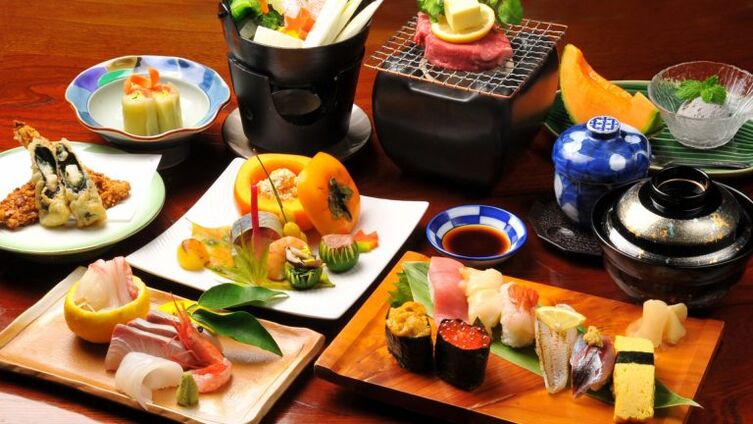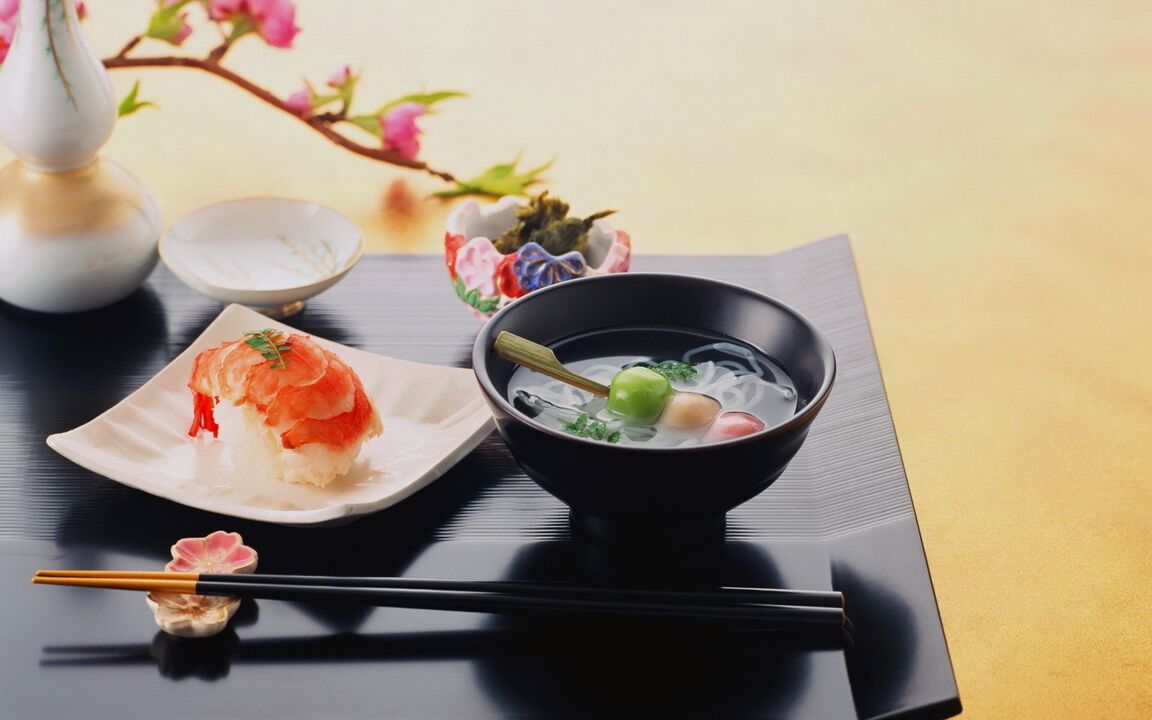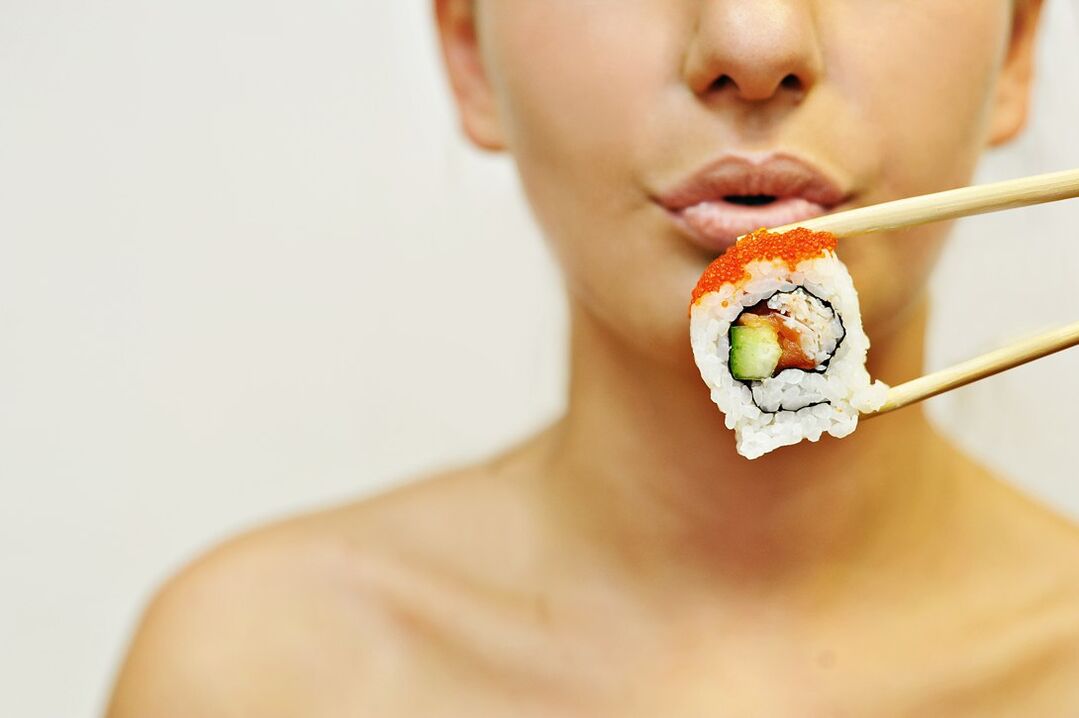In recent years, the Japanese diet has grown in popularity tremendously, combining quick results and benefits for the body at the same time. The main feature of this 2-week meal plan is also that there is no so-called rollback if everything returns to its original state after 2-3 weeks.
Japanese food is becoming increasingly popular in local cafes and restaurants thanks to the growing popularity of Japanese cuisine. In almost every kitchen today, you can buy rolls or whatever you need to make them yourself. So what is the Japanese weight loss diet?

The main features of the Japanese diet for 14 days
Let's take a quick look at what the Japanese weight loss diet is and what principles it is based on:
- The total duration is 14 days;
- Low carbohydrate, low carbohydrate, high protein foods. Requires discipline and perseverance;
- Total cost - no more than 2, 000 rubles for the entire cycle;
- The estimated result is 5 to 8 kg;
- Repeatability - no more than twice a year;
- Stability - high, with the correct exit from the diet after two weeks, the result lasts for a long time and without rollback;
- Contraindications: pregnancy, during breastfeeding, with diseases of the gastrointestinal tract (ulcer, gastritis, gastroduodenitis, etc. ), with diseases of the kidneys and liver. It is also not recommended in the presence of heart problems. Before starting a diet, it is better to seek advice
Japanese Diet For Weight Loss - Hyped Trend Or Real Effectiveness?

The Japanese diet was previously completely unknown. In addition, the concept of "diet" implied severe cuts in food and calories, up to and including starvation. Despite the popularization of this unique eating plan, many still believe that the Japanese diet will consist of sushi, green tea, and, of course, rice for 14 days. Still, you shouldn't judge this diet based only on traditional Japanese cuisine, all that will remind you for two weeks is sea fish, eggs and green tea - products that are present in many countries around the world. This is a great advantage of the diet, as the diet contains well-known foods, with no exotic foods that can lead to indigestion or even allergies.
It is not yet known exactly how the Japanese 14-day diet relates to the land of the rising sun. According to some reports, it was developed in one of the Japanese clinics, according to others, this nutritional plan was attributed to Japan because of its strict discipline, menu and effectiveness. However, it is not so important where this diet came from, but the fact that if properly managed and followed, it is incredibly effective and safe.
As with any meal, the Japanese menu means reducing calories in your diet. It is based on traditional Japanese cuisine, which is known for avoiding fatty foods, lots of vegetables and fish. One of the famous public figures and nutritionist Naomi Moriyama believes that nutrition is the secret of Japanese women to maintain their beauty and slim figure well into old age. The key, she says, is low-carb and small servings.
According to Naomi's calculations, the Japanese consume 25% fewer calories than people in any other country. With an abundance of various snacks and even so-called fast food, for example, chips, chocolate bars, fatty confectionery and even butter are not particularly popular in Japan. Street food is also low in calories and low in fat and carbohydrates. Therefore, the menu of the Japanese diet is fully in line with the food culture, traditions and basic diet of the country.
Proper fat burning diet is a must! But are you thinking about what result you want to get in the end? Are you sure that after removing the layer of fat, you will see a toned and strong body? To tone your muscles and gain sexual volume, you need the right workouts! And to make it easier for you, we offer you a ready-made training plan diagram!
The concept and main rules of the Japanese diet

The serving sizes of residents of the CIS and Japan differ significantly, so a sharp transition can be a real test for many. But don't be upset, this plan is designed for two weeks, after which it can slowly return to your usual diet and favorite foods.
Protein is the foundation of your diet and a source of satiety. You can only get it from the following products:
- A fish;
- Eggs;
- Chicken breast;
- Dairy products;
- Lean beef.
Only crackers and various types of vegetables are used as carbohydrates. For fats - olive oil. Also, fats will be found in fish and other protein products, this will prevent deficiency. The menu and scheme of the Japanese 14-day diet with a significant restriction on calories, especially carbohydrates, can be a real challenge. Despite this, it is worth noting that the body quickly gets used to such a diet, and the second week will not become so difficult.
It is important to note that healthy fiber is included in the diet in sufficient quantities. It occurs in vegetables that can be eaten with almost no restrictions (only on a few days). This eliminates gastrointestinal problems and improves digestion. Green tea and coffee are also included in the diet. Not only do they help you stay alert and avoid fatigue, but they also provide the body with a large amount of antioxidants. It is important that the tea be natural, devoid of colors and flavors, and it is preferable to buy coffee in beans and grind it yourself.
If you look through the menu for the 14 days of the Japanese diet, you can be sure that all the beneficial substances are included in this nutritional plan and that the main changes have mainly affected the portion size and the amount of food consumed. Basically two weeks go by without any consequences for most people, but if your body has reacted too harshly to the breakdown of carbohydrates then you should postpone the diet for the future and see a doctor. The main symptoms of this are headache, severe weakness, and fatigue.
Drinking regime is of great importance. You need to consume plenty of plain water at room temperature. First, it helps improve digestion and cope with hunger more easily by simulating a full stomach. Second, it enables you to remove processed protein products from the body. Another important point is strict adherence to the master plan. If you seriously decide to give it a try and see how you can lose weight on a Japanese diet, you should only consume these foods and in the amounts provided for each day. Substitutions are not permitted. You cannot change or rearrange the days either.
The only exceptions are coffee and tea. In the morning you can have a cup of tea instead of coffee, depending on your personal preference. Sugar-free, of course. Salt is also a negative factor in the diet, but if you can't leave it out completely, then stick to the minimum amount.
In addition to the low calorie content, a small number of meals per day is also considered to be one of the main difficulties. While other diets include 5 or even 8 snacks a day, the Japanese diet only includes 3 meals. Also, remember that you need to start the day with a glass of water as this "starts" the body and metabolic processes. Dinner should be eaten after 2-3 hours at the earliest, so that the food has time to be digested before sleeping.
This is a strict diet, so a smooth start is recommended, excluding cut transitions in the diet. The body adapts quickly to new conditions and nutrition becomes more comfortable. The simplest way of preparation would be to stop fast food completely at least 3-5 days before the start of the diet and to cut portions (eat no more than half the usual portion size). Although this scheme may seem too rigid, it is completely balanced and does not harm the body, but at the same time you can lose 5-8 kg in just 2 weeks.
Preparation time and grocery shopping

You will need:
- Coffee (ground or grain) - 1 package;
- Natural green tea - 1 pack;
- Chicken eggs - 20 pieces;
- Lean beef (porridge) - 1 kg;
- Sea fish (fillet) - 2 kg;
- Chicken fillet - 1 kg;
- Extra virgin olive oil - 0. 5 l;
- Carrots - 2-3 kg;
- White cabbage - 2 medium-sized pieces;
- Eggplant or zucchini - 1 kg;
- Fruit (except grapes and bananas) - 1 kg;
- Kefir - 1 l;
- Tomato juice - 1 l;
- Lemons - 2 pcs.
In terms of principles and food lists, the Japanese diet is often compared and even confused with the "chemical diet" - a nutritional plan developed in the United States. Its creator is Osama Hamdiy, whose diet is actively used in the treatment of diabetes and obesityJapanese diet also uses the principle of severely restricting carbohydrates and increasing protein intake, which changes the chemistry of metabolic processes in the body and sets off chains of reactions that lead to severe weight loss. However, there is an important difference between these diet plans. The Osama HamdiyaSystem includes an unlimited number of products, so you can count on muscle building and vigorous workouts. At the same time, Japanese regulation has strict quantitative limits and a short duration of just two weeks - a plus for those who get quick resultswant to and not be able to exhaust the body for months by avoiding the usual diet.
A detailed menu of the Japanese diet for every day

It is important to take this scheme very seriously and strictly adhere to the recommendations. Any attempt to break the scheme or add products can lead to worse overall results than expected. The menu for each day of the Japanese diet for 14 days is as follows:
Day number 1
- Breakfast - pure coffee without milk or sugar;
- Lunch - boiled eggs (2 pieces), boiled cabbage with olive oil, 1 glass of tomato juice;
- Dinner - 200 g of fried or boiled fish.
Day number 2
- Breakfast - coffee and 1 slice of rye bread;
- Lunch - 200 g of fried or boiled fish with boiled cabbage and olive oil;
- Dinner - 100 g boiled beef and 1 glass of kefir.
Day number 3
- Breakfast - a slice of rye bread (dry in the toaster) or a biscuit with no additives. Cup of coffee;
- Lunch - fry eggplant or zucchini in olive oil (any serving size);
- Dinner - cook 200 g of beef without salt, fresh cabbage with olive oil, 2 boiled eggs.
Day number 4
- Breakfast - a fresh small carrot with the juice of one lemon;
- Lunch - 200 g of fried or boiled fish, 1 glass of tomato juice;
- Dinner - 200 g of fruit (any).
Day number 5
- Breakfast - a medium-sized carrot with the juice of a whole lemon;
- Lunch - boiled or stewed fish with a glass of tomato juice;
- Dinner - 200 grams of fruit (any).
Day number 6
- Breakfast - a cup of coffee without sugar;
- Lunch - boiled chicken without salt (500 g), fresh carrot and coleslaw (season with olive oil);
- Dinner - a fresh carrot and 2 boiled eggs.
Day number 7
- Breakfast - a cup of green tea;
- Lunch - boiled beef without salt (200g);
- Dinner - your choice: 200 g fruit, 200 g boiled beef with a glass of kefir, 200 g boiled fish or 2 boiled eggs with lettuce (carrots with olive oil.
Day number 8
- Breakfast - a cup of coffee;
- Lunch - 500 g of boiled chicken without salt, cabbage and carrot salad (season with olive oil);
- Dinner - a small carrot with olive oil, 2 boiled eggs.
Day number 9
- Breakfast - a carrot with the juice of a whole lemon;
- Lunch - 200 g of fried or boiled fish and a glass of tomato juice;
- Dinner - 200g of fruit of your choice.
Day number 10
- Breakfast - a cup of coffee;
- Lunch - 3 small carrots (fry in vegetable oil), 1 egg and 50 g of cheese;
- Dinner - 200 g of fruit.
Day number 11
- Breakfast - a cup of coffee and 1 slice of rye bread;
- Lunch - fry eggplant or zucchini in olive oil (any amount);
- Dinner - 200 g of boiled beef, fresh cabbage with olive oil, 2 boiled eggs.
Day number 12
- Breakfast - a cup of coffee and a slice of rye bread;
- Lunch - 200 g of fried or boiled fish, fresh cabbage with olive oil;
- Dinner - 100 g boiled beef and 1 glass of kefir.
Day number 13
- Breakfast - a cup of coffee;
- Lunch - 2 boiled eggs, boiled cabbage with olive oil and 1 glass of tomato juice;
- Dinner - fry 200 g of fish in olive oil.
Day number 14
- Breakfast - a cup of coffee;
- Lunch - fried or boiled fish, fresh cabbage with olive oil;
- Dinner - 200 grams of boiled beef, 1 glass of kefir.
There is an opinion that by following this diet, you can get the most permanent and stable results without going back to normal weight. After losing weight, it is possible to maintain the weight for up to 3 years, but only on the condition that you strictly adhere to the diet and do not start to compensate everything with high-calorie foods immediately after the 15th day. A good solution would also be to adapt the Japanese menu to your daily diet.















































